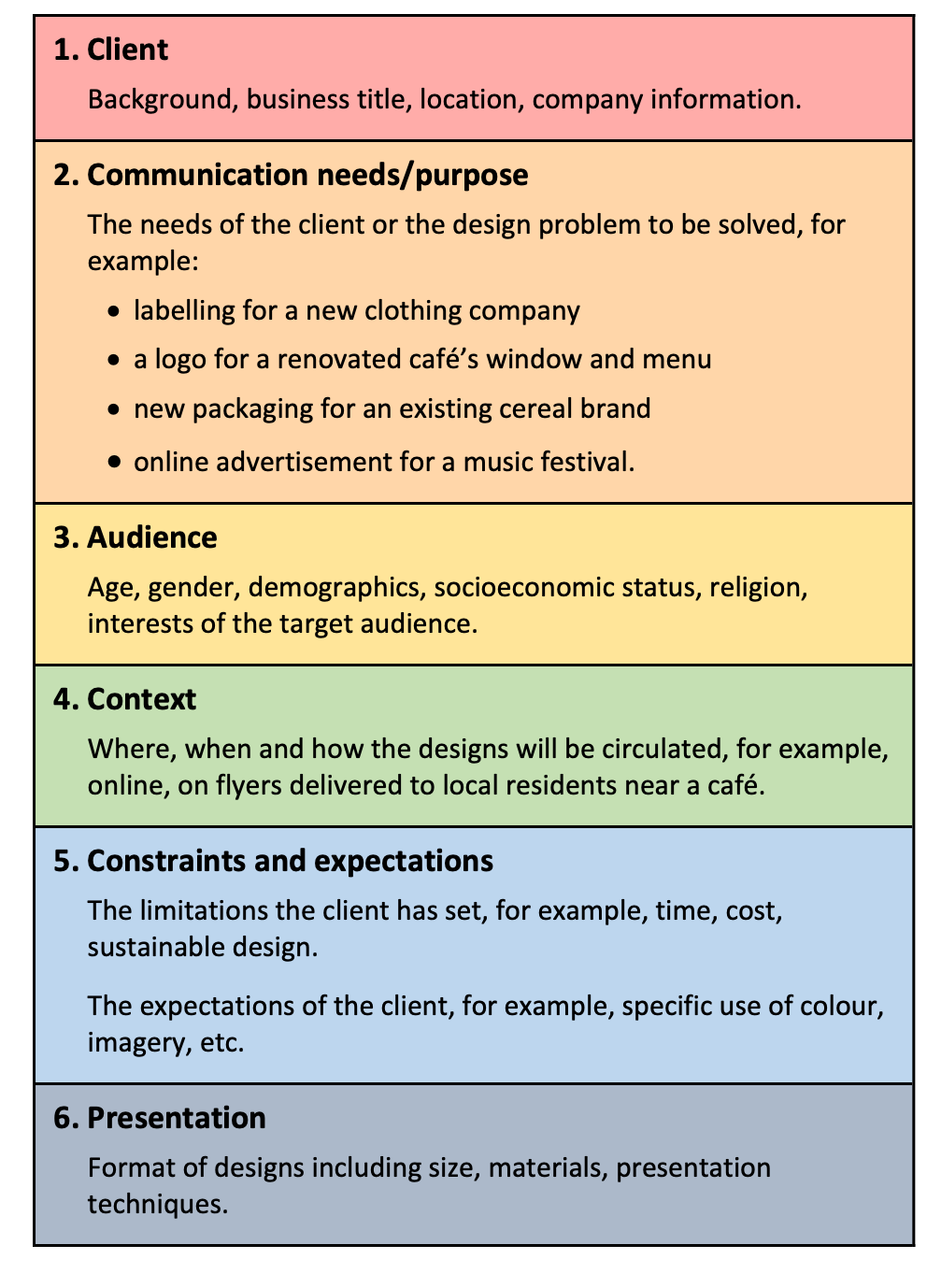A design brief is a fundamental component of Visual Communication Design. The brief is a specific text type having particular features and structures.
A design brief provides clear boundaries around what a project involves. Details about the client and target audience inform the communication needs and how the designer addresses the brief's requirements, including the methods, media and materials used. The designer also must take into consideration constraints on the design process and presentation formats.
A brief usually includes the components in the table below.

Note that the presentation step may be repeated more than once as designers focus on different components of the design brief.
The following strategy enables students to understand the specific features and structures of a design brief, including language use, register (or level of formality) and layout. The strategy involves:
- initial teacher modelling and guided joint deconstruction
- followed by pair work
- small group work
- brief oral presentations during which students summarise their responses.
A glossary of technical vocabulary encountered during the strategy is created by students.
- The teacher presents students with the design brief template (as above).
- The teacher and students discuss the components of the design brief template.
- The teacher distributes or displays a
sample design brief.
- Jointly, the teacher and students deconstruct the sample brief with teacher prompting students, for example:
- Why are the components of the brief sequenced in this way?
- How would you describe the
register (or level of formality) of the language in the brief? What words make you say this? Why is this register used?
- Discuss the use of tense in the brief. Does tense vary across the brief components?
- Identify the use of modal verbs in the brief. Modality refers to ability, possibility, certainty, permission, or obligation, for example, 'I can;' 'It will;' 'She must.' Discuss the use of these verbs in the context of the brief component.
- The teacher asks students to form pairs and complete the following:
- With your partner, highlight or list VCD-specific words or phrases.
- With your partner, highlight or list any unfamiliar or technical words or phrases, for example, 'corporate identity;' 'demographics of the envisioned audience.'
- Pair responses are shared with the whole class, discussed, defined, and recorded on the whiteboard and in students' notes.
- Students form groups of four. Each group is given an unseen design brief. These may need to be written by the teacher.
- The teacher asks groups to discuss the brief's contents, including points in step 5 and to note their responses (or jointly annotate the brief).
- Each group presents responses to the class including the following:
- A brief explanation of the client, communication needs, target audience in their sample brief
- VCD-specific terminology used in the brief
- Other unfamiliar or technical words or phrases used in the brief, definitions of these and explanation of where and why they are used in the brief.
- From the responses collected, students create glossaries of novel words/phrases that may be used in their design briefs.
Curriculum links for the above example:
VCAVCDP003,
VCAVCDR004,
VCAVCDE006,
VCAVCDE007,
VCAVCDP009,
VCAVCDR011.